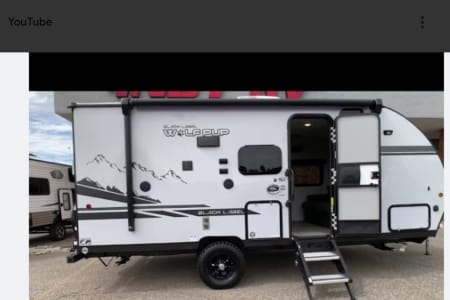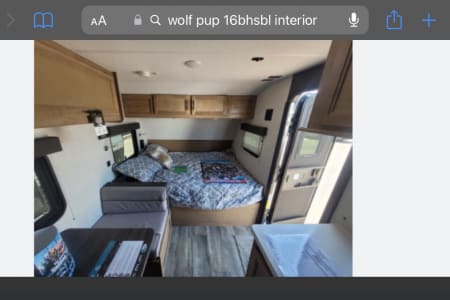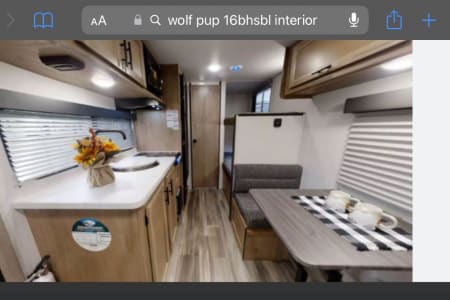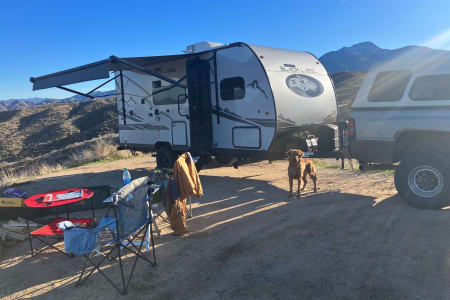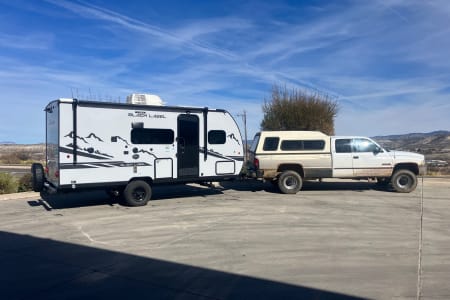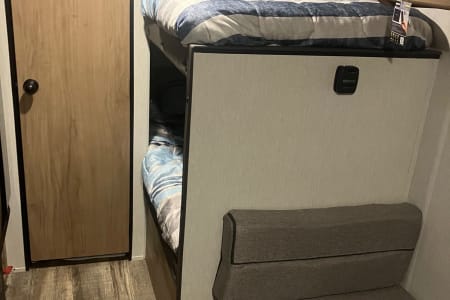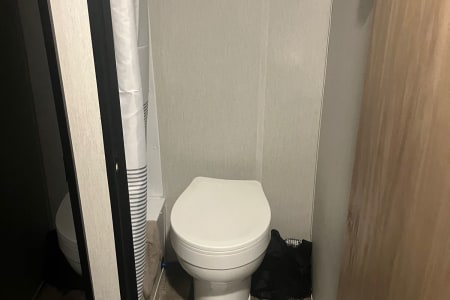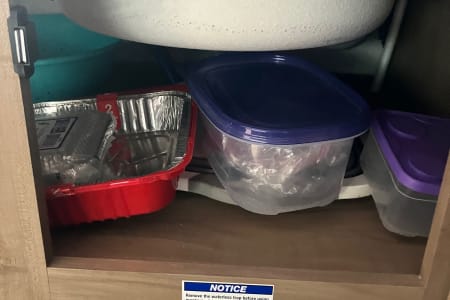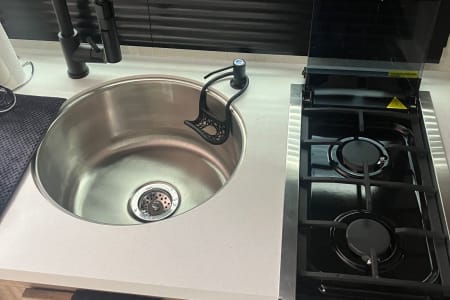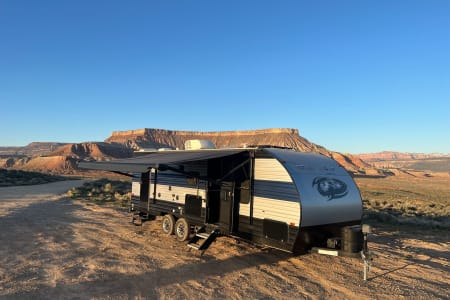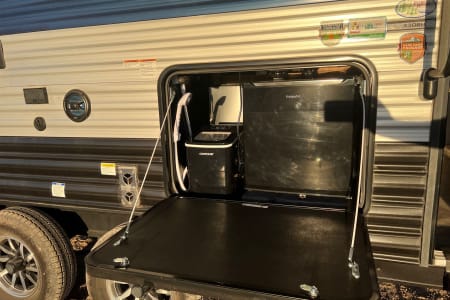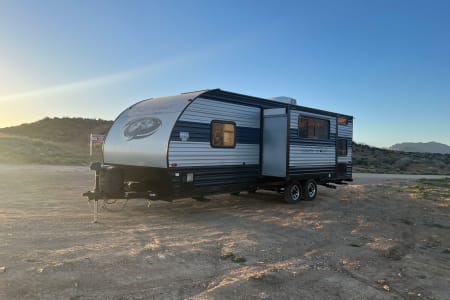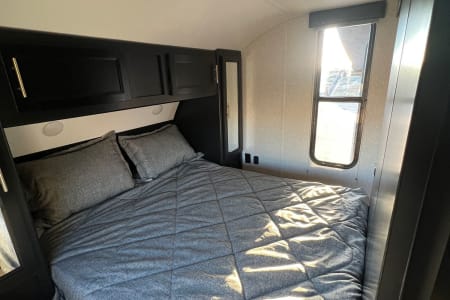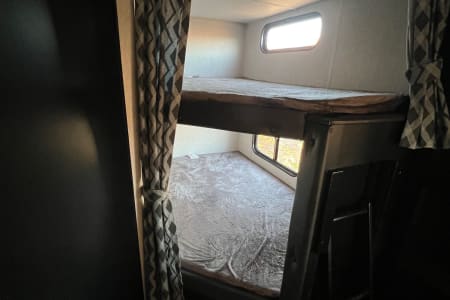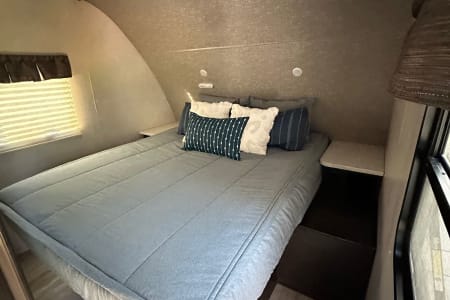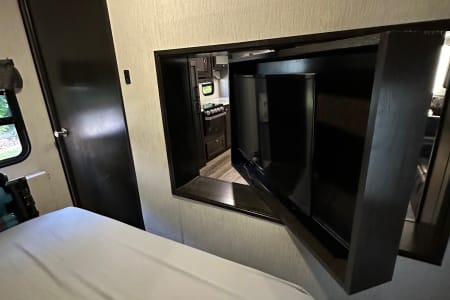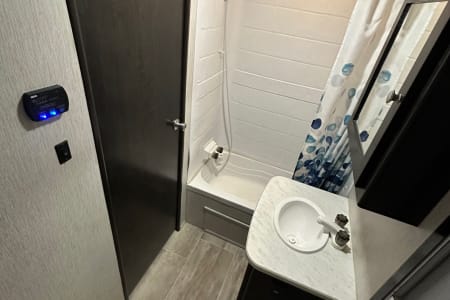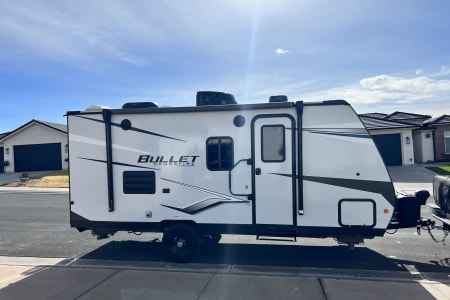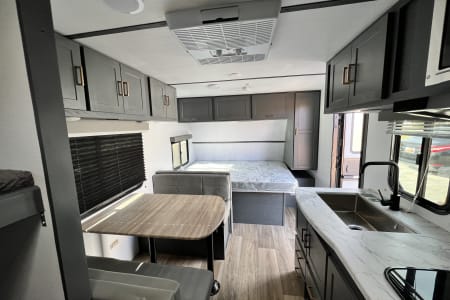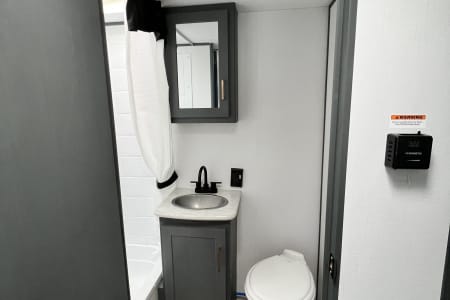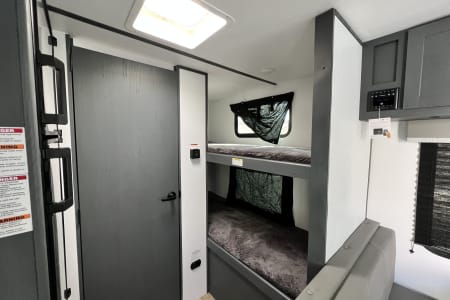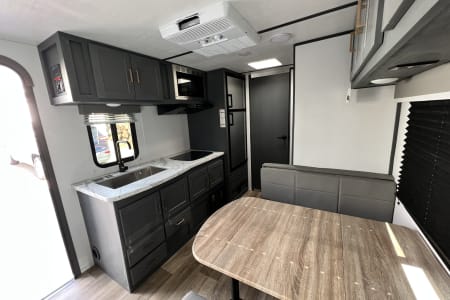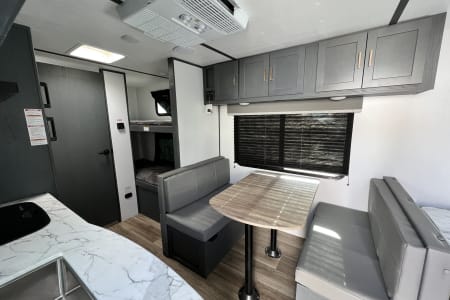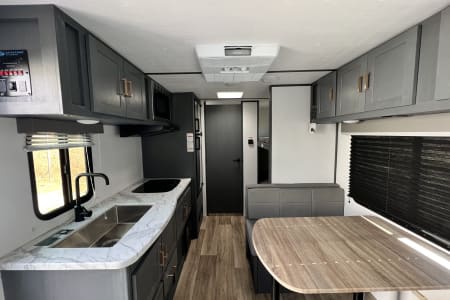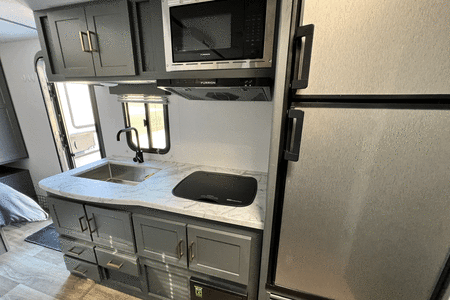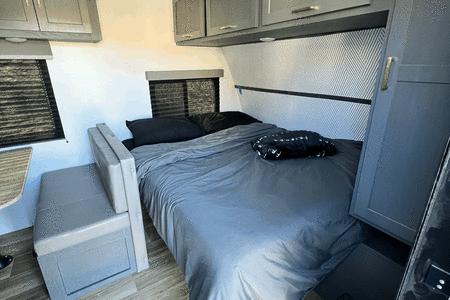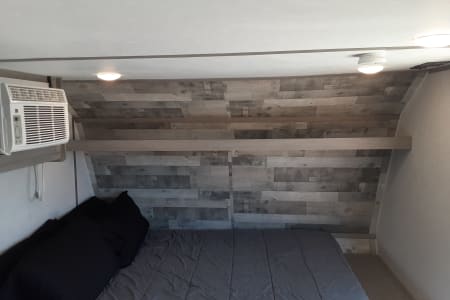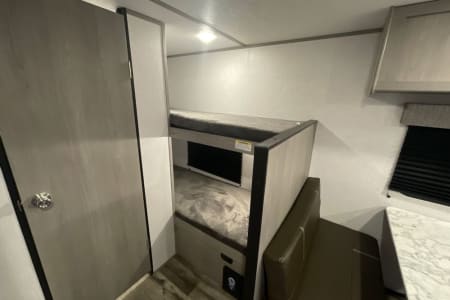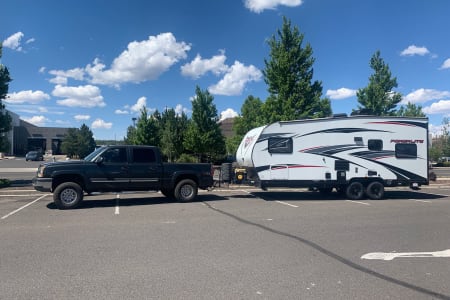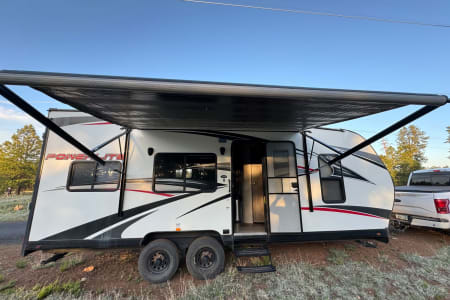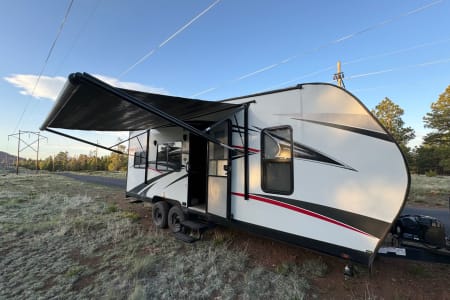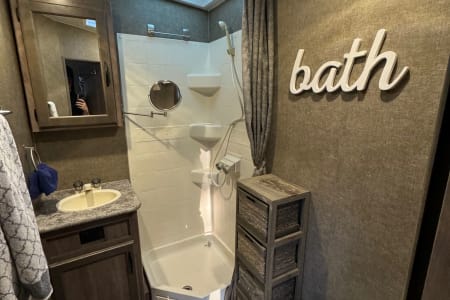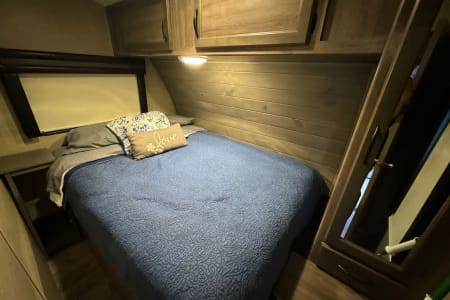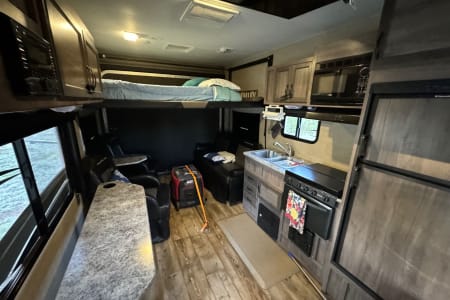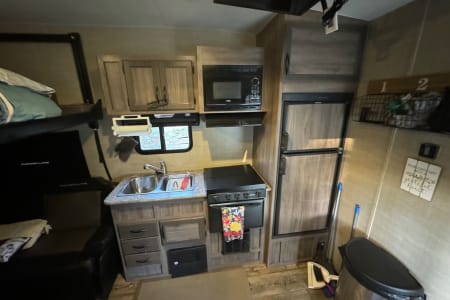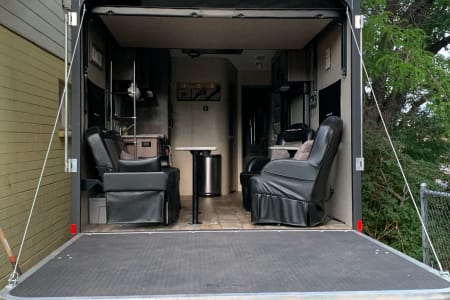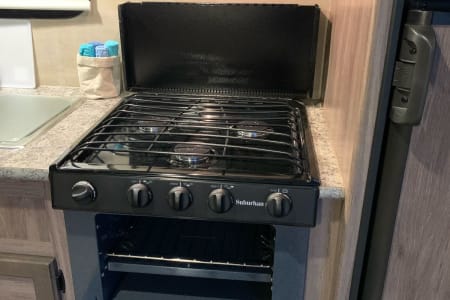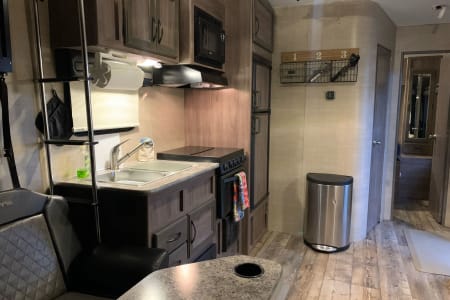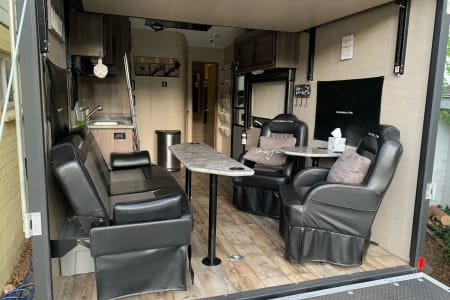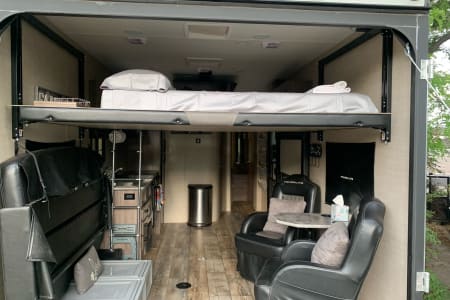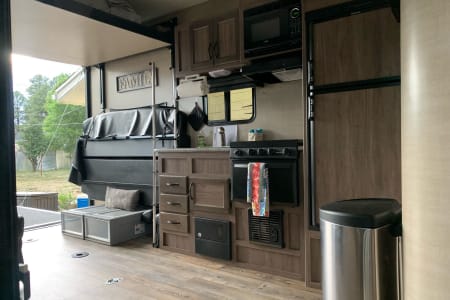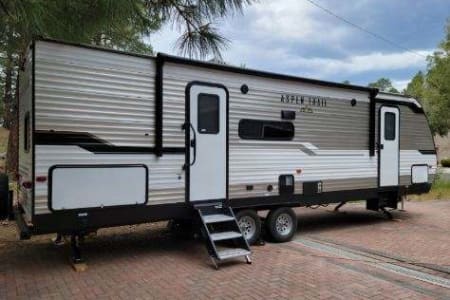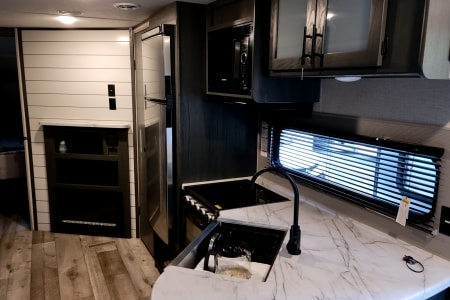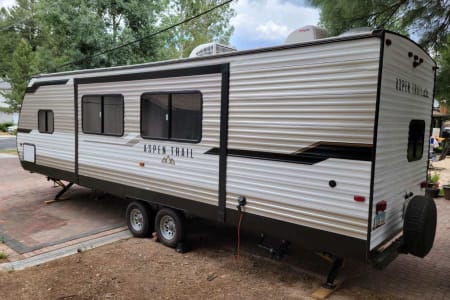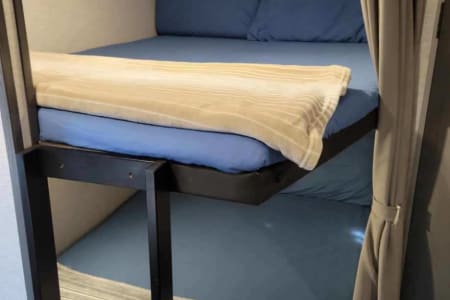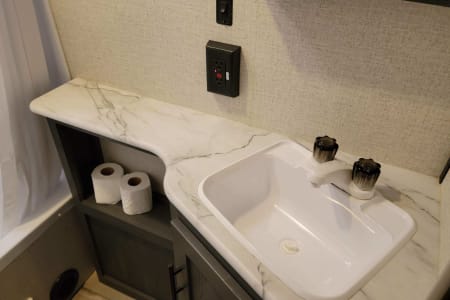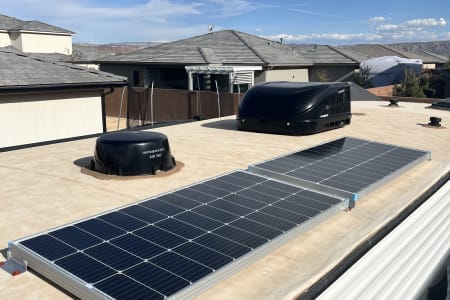Grand Canyon National Park Arizona (AZ) RV Rentals
RV Rentals Dates
Home / National & State Park Guides / National Park / Grand Canyon National Park
Looking for RV rentals, camper van rentals or travel trailer rentals near Grand Canyon National Park?
Introduction
Grand Canyon National Park is not only one of the most iconic natural wonders in the United States but also a fantastic destination for RV camping. With its rich history, cultural significance, unique geological features, and a plethora of activities to enjoy, the Grand Canyon offers an unforgettable experience for RV rentals. The history and cultural significance of Grand Canyon National Park are deeply rooted in the Native American tribes that have called this area home for thousands of years. For these tribes, the canyon holds spiritual and cultural importance, and their presence can be felt throughout the park. Exploring the park’s visitor centers and museums will provide you with insights into the ancestral Puebloan people and their connection to the canyon. RVThereYet is an RV rental company, offering a diverse fleet of motorhomes, including Class A, Class B, and Class C Rentals, Travel, Trailers, and Motorhomes for unforgettable adventures in scenic RV parks and campsites in Grand Canyon National Park. Ensure early reservations for camper rentals at Grand Canyon National Park.
RV Rentals in Grand Canyon National Park
Coupon Code: RVTHEREYET - 10% Off
Coupon Code: RVTHEREYET - 10% Off
Coupon Code: RVTHEREYET - 10% Off
Coupon Code: RVTHEREYET - 10% Off
Coupon Code: RVTHEREYET - 10% Off
Coupon Code: RVTHEREYET - 10% Off
Coupon Code: RVTHEREYET - 10% Off
Coupon Code: RVTHEREYET - 10% Off
Transportation
-
Driving/Transportation
When visiting Park private vehicle travel is the most convenient transportation option. Visitors can access the park from different entrances including the South Rim and the North Rim. The South Rim is open year-round and can be reached via Highway 64. The North Rim on the other hand is only open from mid-May to mid-October and can be accessed via Highway 67. It’s important to note that there are restrictions on rig sizes within the park. Vehicles longer than 30 feet are not recommended on some roads due to tight curves and limited parking. Please check the park’s website for specific vehicle restrictions and plan accordingly.
-
Parking area
Park provides designated RV parking areas throughout the park allowing RV owners to conveniently explore its wonders. However overnight parking outside of designated campsites is not permitted. It is highly recommended to camp with an RV in the park’s designated campgrounds to fully enjoy the experience. While alternative transportation methods like shuttles and bicycles are available within the park having an RV provides the flexibility to explore at your own pace and access more remote areas.
-
Public Transportation
Park offers a comprehensive shuttle bus system that operates along the South Rim. These shuttle buses provide convenient transportation to various viewpoints visitor centers and trailheads within the park. Additionally there are walking paths along the rim that allow visitors to explore the park on foot. These paths offer stunning views of the canyon and are a great way to immerse yourself in the natural beauty of Park.
Top Campsites in Grand Canyon National Park
-
Reservations camping
Located within Park Mather Campground is the most popular choice for campers. With over 300 sites it offers a range of amenities including picnic tables fire rings and access to clean restrooms and showers. The campground is pet-friendly and open year-round. It can accommodate RVs and trailers up to 30 feet in length. Activities in the area include hiking biking and wildlife viewing. Reservations are highly recommended especially during the peak season from May to September.
Situated near the South Rim of Park Trailer Village RV Park is another sought-after campground. It features full hook-up sites with electricity water and sewer connections. The campground is pet-friendly and open year-round. Trailer Village can accommodate RVs and trailers of various sizes. Its convenient location offers easy access to the park’s shuttle bus system hiking trails and stunning viewpoints. Reservations are strongly recommended especially during the summer months.
KOA Located in Williams Arizona the Grand Canyon/Williams KOA is a popular choice for campers looking for a comfortable and convenient stay near the park. This is offers a range of amenities including full hook-up sites Wi-Fi a swimming pool and a hot tub. The campground is pet-friendly and open year-round. It can accommodate and trailers of various sizes. The Grand Canyon/Williams KOA provides a shuttle service to Park making it easy to explore the park’s wonders. Reservations are recommended especially during the peak season.
Situated in the Kaibab National Forest just outside of Park Ten-X Campground offers a tranquil camping experience away from the crowds. This campground features spacious sites with picnic tables and fire rings. It is pet-friendly and open from May to October. Ten-X Campground can accommodate RVs and trailers up to 35 feet in length. Activities in the area include hiking fishing and wildlife viewing. Reservations are recommended especially during the summer months. These popular campsites and KOA near Park offer a range of amenities and convenient access to the park’s attractions. Whether you choose to stay within the park or in the surrounding areas make sure to plan ahead and secure your reservations to ensure a memorable camping experience.Mather Campground
Trailer Village RV Park
Grand Canyon/Williams
Ten-X Campground
-
First-come first-served
Located near the East Entrance of Park Desert View Campground offers 50 first-come-first-served campsites. It is open from mid-April to mid-October weather permitting. The campground can accommodate RVs and trailers up to 30 feet in length. Amenities include picnic tables fire grates and access to restrooms with flush toilets. Desert View Campground is pet-friendly allowing visitors to bring their furry companions along for the adventure. Due to its popularity arriving early in the day is recommended to secure a campsite.
Situated on the North Rim of Park the North Rim Campground provides 90 first-come-first-served campsites. It is open from mid-May to mid-October weather permitting. The campground can accommodate RVs and trailers up to 30 feet in length. Amenities include picnic tables fire rings and access to drinking water and restrooms with flush toilets. The North Rim Campground is pet-friendly allowing visitors to bring their four-legged friends. As availability can be limited arriving early in the day or during weekdays is advisable for securing a campsite.
Located in a remote area on the North Rim of Park Tuweep Campground offers 7 first-come-first-served campsites. It is open year-round but access can be challenging due to rough roads. The campground can accommodate RVs and trailers of various sizes. Amenities are limited with only vault toilets available. Tuweep Campground is pet-friendly allowing visitors to bring their pets along. Due to its remote location and limited campsites it is recommended to arrive early and be prepared for primitive camping conditions. These first-come-first-served campgrounds in Park provide an opportunity for spontaneous camping adventures. However it is important to note that availability can be limited especially during peak season. Plan accordingly and arrive early to secure your campsite and enjoy the breathtaking beauty of the Grand Canyon.Desert View Campground
North Rim Campground
Tuweep Campground
-
Alternate camping
If campsites inside Park are full there are alternative camping options available for RV rentals nearby. Here are two options to consider
There are several private campgrounds located near Park that offer RV camping. One popular option is the Grand Canyon Railway RV Park in Williams Arizona. This campground provides full hook-up sites modern amenities and convenient access to the Grand Canyon Railway which offers scenic train rides to the South Rim. Another option is the Flagstaff KOA Journey located in Flagstaff Arizona. This campground offers spacious RV sites amenities such as Wi-Fi and a swimming pool and is within driving distance of the park. Private campgrounds often require reservations so it’s advisable to book in advance.
For those seeking a more adventurous camping experience backcountry camping is an option near Park. The Kaibab National Forest adjacent to the park offers dispersed camping opportunities. However it’s important to research and follow the forest service guidelines for dispersed camping including restrictions on where and how to camp. Another option is exploring nearby public lands such as the Coconino National Forest which also allows dispersed camping. Keep in mind that backcountry camping requires self-sufficiency and proper preparation including obtaining necessary permits and following Leave No Trace principles. These alternative camping options provide RV rentals with opportunities to still enjoy the natural beauty of the area even if campsites inside Park are full. Whether choosing a private campground or venturing into the backcountry planning ahead and being prepared will ensure a memorable camping experience near the grandeur of the Grand Canyon.Private Campgrounds
Backcountry Camping
-
General activities
Hiking is undoubtedly the most popular activity in Park. With an extensive trail system hikers can choose from easy walks along the rim to challenging treks into the canyon. One iconic trail is the Bright Angel Trail offering stunning views and access to water sources. Another popular trail is the South Kaibab Trail known for its breathtaking vistas. Remember to bring plenty of water wear sturdy footwear and be prepared for the park’s high elevation and varying temperatures.
Exploring Park on two wheels is a thrilling experience. Cyclists can ride along the Hermit Road a scenic route that offers panoramic views of the canyon. Another option is the Greenway Trail a paved path that connects the park’s visitor centers and offers a more leisurely biking experience. Cyclists should be cautious of traffic and follow park regulations regarding bike usage on specific trails.
Anglers will find opportunities to cast their lines in the Colorado River and its tributaries within the park. Fishing in the park requires a valid Arizona fishing license and specific regulations apply. Popular fishing spots include the Bright Angel Creek and the Colorado River near Phantom Ranch. Enjoy the serenity of the surroundings while trying to catch trout bass or catfish.
Park is teeming with diverse wildlife making it a paradise for nature enthusiasts. Visitors can spot iconic species such as mule deer California condors and bighorn sheep. The North Rim is particularly known for its wildlife sightings. Remember to maintain a safe distance and respect the animals’ natural behaviors.
For a thrilling adventure consider embarking on a rafting trip along the Colorado River. Whether you opt for a guided tour or a self-guided trip rafting through the Grand Canyon offers a unique perspective of the park’s geological wonders. Be aware that rafting requires careful planning permits and knowledge of river safety. These popular outdoor activities attract RV campers to Park year after year. Whether you’re seeking a challenging hike a scenic bike ride a peaceful fishing excursion a wildlife encounter or an adrenaline-pumping rafting trip the park offers endless opportunities for outdoor adventure and unforgettable experiences.Hiking
Biking
Fishing
Wildlife Viewing
Rafting
-
Alternative activities
Park is renowned for its breathtaking vistas making sightseeing a popular activity for RV campers. Drive along Desert View Drive or Hermit Road to access numerous viewpoints that offer stunning panoramic views of the canyon. Don’t miss the iconic Mather Point or Yavapai Point which provide awe-inspiring vistas. Enjoy the beauty of the canyon from the comfort of your RV or take short walks to viewpoints for a closer look.
For those who prefer a more relaxed approach to enjoying the outdoors nature watching in the park is a wonderful option. Set up your camp chair or find a cozy spot along the rim and observe the diverse wildlife and the ever-changing colors of the canyon. Look out for California condors soaring overhead elk grazing in meadows or squirrels scurrying among the trees. The park’s tranquility and natural beauty provide a perfect setting for nature enthusiasts.
Park offers endless opportunities for capturing Instagram-worthy photos. From sunrise to sunset the canyon’s ever-changing light and shadows create a photographer’s paradise. Capture the vibrant colors of the rock formations the dramatic cliffs and the sweeping vistas. Popular photography spots include Hopi Point Powell Point and Lipan Point. Don’t forget to bring your camera or smartphone to immortalize the beauty of the Grand Canyon.
Park offers a variety of ranger-led programs that provide educational and entertaining experiences for all ages. Attend a ranger talk or join a guided walk to learn about the park’s geology history and wildlife. Junior Ranger programs are available for young visitors allowing them to earn badges while learning about the park’s natural wonders. Check the park’s website or visitor centers for the schedule of ranger programs during your visit.
Explore the visitor centers and museums within Park for a deeper understanding of its natural and cultural heritage. The Grand Canyon Visitor Center Yavapai Geology Museum and Tusayan Museum offer exhibits interactive displays and informative films that provide insights into the park’s geology wildlife and Native American history. Take your time to explore these educational resources and gain a greater appreciation for the wonders of the Grand Canyon. These alternative recreational activities in Park cater to RV campers who prefer a more relaxed and leisurely approach to enjoying the park’s beauty. Whether you’re sightseeing nature watching capturing stunning photos participating in ranger programs or immersing yourself in the park’s visitor centers and museums there are plenty of ways to appreciate the grandeur of the Grand Canyon at your own pace.Sightseeing
Nature Watching
Photography
Ranger Programs
Visitor Centers and Museums
Season-specific experiences in Grand Canyon National Park
-
Spring activities
Spring brings a burst of color to Park as meadows and forests come alive with vibrant wildflowers. Take a leisurely stroll along the Rim Trail or hike the Bright Angel Trail to immerse yourself in this natural spectacle. Look out for lupines Indian paintbrushes and other native wildflowers that blanket the landscape with their beauty. The South Rim of the park is particularly known for its stunning wildflower displays during the spring season.
Located at the eastern end of the South Rim the Desert View Watchtower is a historic landmark that offers breathtaking views of the canyon. Designed by Mary Colter this iconic structure resembles an ancient Native American watchtower and provides a unique vantage point to admire the vastness of the Grand Canyon. Climb to the top for panoramic vistas or explore the interior to learn about the region’s Native American history and culture.
Explore the ancient past of the Grand Canyon at the Tusayan Ruins located near the South Rim. This archaeological site showcases the remnants of a Puebloan village inhabited around 800 years ago. Wander through the ruins and imagine what life was like for the ancestral Puebloan people who called this area home. Interpretive signs provide insights into their culture and daily activities making it a fascinating historical experience.
Offering stunning views of the canyon Yavapai Point is a must-visit landmark on the South Rim. This popular viewpoint provides an excellent opportunity to witness the dramatic geological features of the Grand Canyon. The nearby Yavapai Geology Museum offers exhibits and displays that explain the formation and history of the canyon. Springtime at Yavapai Point offers pleasant temperatures and clear skies making it an ideal spot for sightseeing and capturing memorable photographs.
Spring is an ideal time for adventurous RV campers to embark on a thrilling rafting journey along the Colorado River. Experience the power of the river as you navigate through the canyon’s rapids and marvel at the towering walls surrounding you. Guided rafting trips are available ranging from single-day excursions to multi-day adventures. Immerse yourself in the beauty and grandeur of the Grand Canyon from a unique perspective. These recreational activities and landmarks in Park during the spring season offer RV campers a chance to witness the park’s natural beauty explore its rich history and embark on thrilling adventures. Whether you’re admiring wildflowers visiting historic sites or enjoying the exhilaration of rafting spring is an incredible time to experience the wonders of the Grand Canyon.Wildflower Viewing
Desert View Watchtower
Tusayan Ruins
Yavapai Point
Colorado River Rafting
-
Summer activities
Summer is the perfect time for the adventurous RV campers to embark on the epic Rim-to-Rim hike in Park. This challenging trek takes you from the North Rim to the South Rim or vice versa offering breathtaking views and a true sense of accomplishment. Be prepared for steep switchbacks intense heat and long distances. It is recommended to start early in the morning carry plenty of water and take breaks in shaded areas. This iconic hike allows you to fully immerse yourself in the grandeur of the canyon.
Beat the summer heat by hiking the South Kaibab Trail known for its stunning panoramic views and shaded rest areas. This trail offers a variety of hiking options from short day hikes to longer treks. Descend into the canyon and experience the dramatic landscape up close. Remember to bring ample water wear appropriate hiking gear and be mindful of the challenging terrain. The trailhead is accessible from the South Rim and the breathtaking vistas along the way make it a favorite among summer hikers.
For a unique and memorable experience consider taking a mule ride through the Grand Canyon during the summer months. Guided mule rides are available from the South Rim offering a different perspective of the canyon’s beauty. Traverse the narrow trails while enjoying the shade provided by the mule train. It’s important to note that mule rides require advance reservations and have weight restrictions. This adventure is a fantastic way to explore the canyon while enjoying the cool breeze and avoiding the heat of the summer sun.
Summer nights in Park provide the perfect opportunity for stargazing and camping under the vast desert sky. Set up camp at one of the park’s designated campgrounds and witness the brilliance of the night sky. Away from city lights the Grand Canyon offers a dark sky ideal for observing stars constellations and even the Milky Way. Lay back relax and let the wonders of the universe unfold above you. Remember to bring a telescope or binoculars for a closer look at the celestial wonders.
Summer is prime time for thrilling rafting adventures on the Colorado River. Experience the rush of navigating through the canyon’s rapids and marvel at the towering walls surrounding you. Multi-day rafting trips allow you to fully immerse yourself in the beauty and tranquility of the Grand Canyon. Enjoy camping along the riverbanks swimming in refreshing pools and experiencing the serenity of the canyon at night. Rafting trips require advanced planning and permits so be sure to make arrangements well in advance. These summer activities in Park provide RV campers with thrilling adventures breathtaking views and unforgettable experiences. Whether you’re embarking on a challenging hike exploring the canyon on a mule ride stargazing under the desert sky rafting along the Colorado River summer is a season of excitement and exploration in the Grand Canyon.Rim-to-Rim Hike
South Kaibab Trail
Mule Ride
Camping Under the Stars
Colorado River Rafting
-
Fall activities
As the leaves change color fall brings a stunning display of autumn foliage to Park. Take a leisurely stroll along the Rim Trail or hike the Bright Angel Trail to immerse yourself in the vibrant hues of the season. The golden aspens and red maples create a picturesque backdrop against the canyon’s majestic walls. The South Rim is particularly known for its fall foliage offering breathtaking views and ample opportunities for capturing beautiful photographs.
Fall provides photographers with the perfect opportunity to capture the Grand Canyon in all its autumn glory. The changing colors of the foliage combined with the golden sunlight create a magical atmosphere for capturing stunning images. Explore various viewpoints along the rim such as Yaki Point or Maricopa Point to find the best angles and compositions. Whether you’re an amateur or a professional photographer fall in Park offers endless possibilities for capturing the beauty of the season.
Fall is an ideal time for hiking in Park with cooler temperatures and fewer crowds. Embark on a scenic hike along the North Kaibab Trail which offers breathtaking views of the canyon and traverses through diverse ecosystems. The trail descends into the canyon allowing you to experience the changing landscapes up close. Remember to bring layers of clothing as temperatures can vary throughout the day and be prepared for potential weather changes.
Fall is a fantastic time for wildlife enthusiasts to observe the diverse species that call Park home. As animals prepare for the winter months they become more active and visible. Look out for elk grazing in meadows mule deer roaming the forests and California condors soaring above the canyon. The North Rim is known for its wildlife sightings offering a chance to witness these magnificent creatures in their natural habitat.
Fall camping in Park provides a serene and peaceful experience with fewer crowds and cooler temperatures. Set up camp at one of the park’s designated campgrounds such as Mather Campground or Desert View Campground and enjoy the tranquility of the surroundings. Fall evenings offer crisp air and clear skies perfect for cozy campfires and stargazing. Embrace the beauty of the season while camping in the heart of the Grand Canyon. These fall activities in Park offer RV campers a chance to witness the park’s natural beauty capture stunning photographs embark on scenic hikes observe wildlife and enjoy the tranquility of fall camping. Whether you’re admiring the fall foliage exploring the canyon with your camera or immersing yourself in the peacefulness of the park fall is a delightful season to experience the wonders of the Grand Canyon.Fall Foliage
Photography
Hiking
Wildlife Watching
Camping
-
Winter activities
Winter Hiking
Winter transforms Park into a serene and tranquil wonderland. Lace up your boots and embark on a winter hike along the Rim Trail or the South Kaibab Trail. The crisp air and snow-dusted landscapes create a unique and enchanting atmosphere. Be prepared for icy and snowy conditions and use traction devices for added safety. Winter hikes offer a quieter and more intimate experience allowing you to appreciate the solitude and the breathtaking beauty of the canyon in its winter attire.
Photography
Winter provides photographers with a captivating canvas to capture the grandeur of Park. The contrast between the white snow red rock formations and deep blue skies creates a stunning visual spectacle. Explore viewpoints such as Yavapai Point or Lipan Point to capture the winter landscape from different angles. The soft light of winter adds a magical touch to your photographs making it an ideal time for capturing unique and memorable images.
Scenic Drives
Winter is an excellent time to embark on a scenic drive through Park. The park’s main roads such as Desert View Drive and Hermit Road remain open during the winter months offering access to breathtaking viewpoints and vistas. Enjoy the tranquility of the park as you drive along snow-covered roads marveling at the beauty of the canyon in its winter splendor. Be prepared for potential road closures or delays due to winter weather conditions and always drive with caution.
Wildlife Viewing
Winter provides a unique opportunity to observe wildlife in Park. As animals adapt to the cold and snow they become more active and visible. Look out for elk grazing in open meadows bighorn sheep navigating rocky slopes and birds of prey soaring above the canyon. The North Rim is known for its winter wildlife sightings offering a chance to witness these magnificent creatures in their natural habitat against the backdrop of the snow-covered canyon.
Lodging and Cozy Retreats
Winter in Park offers the chance to enjoy the cozy comforts of lodges and retreats within the park. Stay at the historic El Tovar Hotel or the Bright Angel Lodge where you can unwind by a crackling fireplace and enjoy stunning views of the winter landscape. These accommodations provide a warm and inviting atmosphere allowing you to relax and rejuvenate after a day of winter exploration in the park.
These winter activities in Park offer RV campers a chance to experience the park’s serene beauty capture stunning photographs embark on scenic drives observe wildlife and enjoy the cozy comforts of lodges and retreats. Whether you’re hiking through snow-covered trails capturing the winter landscape with your camera or simply enjoying the peacefulness of the park winter is a magical season to embrace the wonders of the Grand Canyon.









